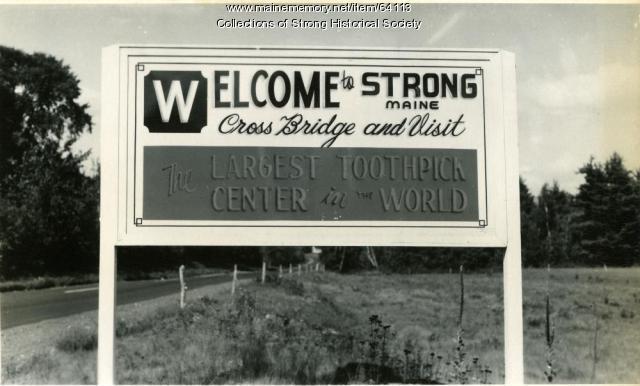Keywords: rural
Item 70282
Dyar rural school building, Strong, ca. 1910
Contributed by: Strong Historical Society Date: circa 1910 Location: Strong Media: Photographic print
Item 69477
Rural Free Delivery Driver, Strong, ca. 1915
Contributed by: Strong Historical Society Date: circa 1915 Location: Strong Media: Photographic print
Item 109849
Phillips Rural School Buiding & Outhouse, Phillips, 1897
Contributed by: Maine Historical Society Date: 1897 Location: Phillips Client: Town of Phillips Architect: Coombs, Gibbs, and Wilkinson Architects
Item 109295
St. Albans Apartment Project, FMHA Rural Rental Housing, St. Albans, 1976-1978
Contributed by: Maine Historical Society Date: 1976–1978 Location: St. Albans Client: St. Albans Apartment Architect: Eaton W. Tarbell
Exhibit
Chansonetta Stanley Emmons: Staging the Past
Chansonetta Stanley Emmons (1858-1937) of Kingfield, Maine, experimented with the burgeoning artform of photography. Starting in 1897, Emmons documented the lives of people, many in rural and agricultural regions in Maine and around the world. Often described as recalling a bygone era, this exhibition features glass plate negatives and painted lantern slides from the collections of the Stanley Museum in Kingfield on deposit at Maine Historical Society, that present a time of rapid change, from 1897 to 1926.
Exhibit
Reading, Writing and 'Rithmetic: Brooklin Schools
When Brooklin, located on the Blue Hill Peninsula, was incorporated in 1849, there were ten school districts and nine one-room school houses. As the years went by, population changes affected the location and number of schools in the area. State requirements began to determine ways that student's education would be handled. Regardless, education of the Brooklin students always remained a high priority for the town.
Site Page
Strong, a Mussul Unsquit village - Student Research
"… that the War affected so many areas of rural life. For example, because of the need for soldiers’ wool uniforms and blankets, Maine farmers raised…"
Site Page
Scarborough: They Called It Owascoag - Transportation Through the Years - Page 4 of 4
"… in more populated areas had been tarred, but more rural roads had yet to be done. Farmers would keep a horse and wagon for backup in case roads…"
Story
Hand carrying water in Marshfield
by Dorothy Gardner
Ways of getting water in rural Maine. From fetching water from a stream to having a well.
Story
Ann Luginbuhl - One-to-one in a small rural school
by MLTI Stories of Impact Project
Ann Luginbuhl describes the arrival of one-to-one in a K-8 school of 30 students.
Lesson Plan
Longfellow Studies: The Village Blacksmith - The Reality of a Poem
Grade Level: 6-8, 9-12
Content Area: English Language Arts, Social Studies
"The Village Blacksmith" was a much celebrated poem. Written by Henry Wadsworth Longfellow, the poem appeared to celebrate the work ethic and mannerisms of a working man, the icon of every rural community, the Blacksmith. However, what was the poem really saying?
Lesson Plan
Teddy Roosevelt, Millie, and the Elegant Ride Companion Curriculum
Grade Level: 3-5, 6-8
Content Area: Social Studies
These lesson plans were developed by Maine Historical Society for the Seashore Trolley Museum as a companion curriculum for the historical fiction YA novel "Teddy Roosevelt, Millie, and the Elegant Ride" by Jean. M. Flahive (2019). The novel tells the story of Millie Thayer, a young girl who dreams of leaving the family farm, working in the city, and fighting for women's suffrage. Millie's life begins to change when a "flying carpet" shows up in the form of an electric trolley that cuts across her farm and when a fortune-teller predicts that Millie's path will cross that of someone famous. Suddenly, Millie finds herself caught up in events that shake the nation, Maine, and her family. The lesson plans in this companion curriculum explore a variety of topics including the history of the trolley use in early 20th century Maine, farm and rural life at the turn of the century, the story of Theodore Roosevelt and his relationship with Maine, WWI, and the flu pandemic of 1918-1920.
















